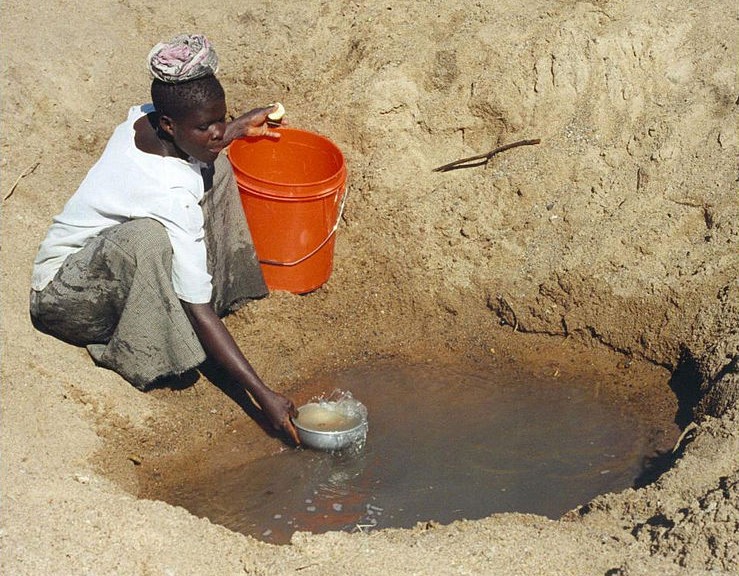The first post on energy briefly explained how the human use of energy is awesome, while the second post went over the basics of energy and introduced the relevant lingo and concepts required to get into a more detailed discussion. This time, I want to further explore why energy is so great, and how it enhances the human experience.
Energy and Human Lifestyles
The human consumption of energy clearly correlates strongly with quality of life (QOL). Quality of life represents the overall well-being of a society, and whether citizens have reasonable access to basic amenities such as water, food, shelter, and schooling; thus generally translating to higher life expectancies and education levels. This is not to be confused with standard of living, which has more to do with income and consumption.
In their paper ‘Energy and Quality of Life‘ (Pasten and Santamarina, 2012), the authors study the effect of energy consumption on different types of QOL indicators. Two groups of QOL indicators were chosen. The first group represents indicators that aren’t implicitly tied with energy consumption: water access, life expectancy at birth, infant mortality rate, and mean years of schooling. The second group represents QOL indicators that are directly tied to energy consumption: proportion of the population with access to electricity, and gross national income per capita.
Ignoring the indicators that are directly tied to energy consumption, and combining the indicators that are independent of energy consumption into a single QOL factor, the authors produced the figure below showing that a certain amount of energy consumption is imperative for QOL. In this figure, the vertical axis represents the authors’ QOL index (out of 10), and the horizontal axis represents the average energy consumption rate of the citizens within a certain country (measured in kW/person). Remember that the kW is a measurement of power, meaning that kW/person is an average rate of continuous energy delivery per person within a particular nation.

From this figure, it is clear that the countries consuming more energy have a higher quality of life (as defined in this study). Additionally, you might notice that below 1 kW/person (horizontal axis), quality of life increases only as energy consumption increases. This means that the data points move up to the right (with the exception of the Congo and Rwanda where both suffered from civil wars). After 1 kW/person, quality of life increases in many countries without additional energy consumption (data points go straight up). This is likely a result of technological and scientific innovation which uses energy differently and more efficiently, and not necessarily more intensely. It would seem as though there is a minimum amount of energy consumption required for a reasonable quality of life (about 1 kW/person), but after that, it all comes down to proper use of energy.

Keep in mind, however, that is only for a basic quality of life (water, life expectancy, infant mortality, education), and nothing more.
Do We Have Enough Energy Capacity?
So, humans need energy, but for just a good quality of life we don’t need infinite amounts of energy. The 1 kW/person quoted above is still a large amount, however, and it only covers the basic human needs according to developed country standards. The definition of the quality of life in the above figure and the 1 kW/person threshold doesn’t take into account computers, airplanes, space travel or high-energy particle accelerators (and much more). These are luxuries that aren’t “necessary”, but certainly contribute to our civilization.
The 1 kW/person minimum for seven billion (and counting…) people means that seven terawatts of average energy capacity is required for the whole world to have decent living standards, which is just under half of current energy consumption capacity (about 15 terrawatts). Thus, we already have enough capacity to give everyone on the planet a basic quality of life, but there are those who consume far less than this (and suffer a lower quality of life as a result), and those that consume far more (and enjoy lives of luxury). Some energy use is purely wasteful and some of it is in the pursuit of aims that go above and beyond the previous definition of quality of life.
Going Beyond a Basic Quality of Life: Priorities in Human Lifestyle
To me, it seems a first priority with regard energy consumption is to ensure that all humans have a high, basic quality of life. There’s no reason that people shouldn’t have access to sufficient amounts of energy to provide clean water and educational institutions along with medical services to increase life expectancies and lower infant mortality rates. We are already capable of that, but for various reasons (which would be another essay in and of itself) there are people with little access to energy.
After the basics are covered, I fully support initiatives that increase our quality of life even further as the next priority. As a Canadian, my average consumption rate is certainly more than 1 kW, and my life isn’t even all that energy intensive compared to many Canadians (I live in a small apartment and do not own a car). I’m 100% behind the goal of reducing energy consumption by finding opportunities to use energy more efficiently, but I also want to live a lifestyle that goes well beyond my basic needs and allows for the expansion of human potential. This means going well beyond a basic existence. I want future generations to travel the planet with greater ease and less impact than today, to communicate with people anywhere, to explore space, and discover new realms of physics and the mysteries of the universe. I thoroughly enjoy the internet and the vast amount of information at my fingertips, and I‘m certain that my life is better for it (time wasted on facebook notwithstanding). I know many people who enjoy massive rock concerts, skiing at Whistler, and summer blockbuster movies. All that requires additional energy on top of the basic definition from above. Lots and lots of it.
Yes, we do waste a lot and we could all stand to knock off a lot of energy consumption through efficiency measures and limiting unnecessary consumption (example: do you really need that brand-new car or will a used model suffice? Heck, maybe you could just walk to work). In fact, reducing energy consumption through efficiency measures has been the focus of my career for the past several years. That being said, the consumption of energy to increase quality of life beyond mere survival is a liberating and positive practice. When energy powered machines are performing the labour of life and our survival is beyond ensured, human minds are free to think and creative works and scientific discoveries are the result.
These creative works include art, music, films, and more. If artists spent several hours a day looking for water and food and avoiding predators, there would be no Mozart or Picasso. Scientific discoveries also require a certain quality of life security. Stephen Hawking is able to educate the world on the wonders of black holes because energy and technology are keeping him alive. Is this completely necessary for the continuation of our species in the present moment? No, but it does create a much richer existence.

Conclusion – Energy is the Master Resource
From the fires that lit the caves of our ancestors to the rapid expansion of gases that power a turbine to the direct-current electricity that flows through my MacBook, energy is the master resource that drives opportunity, innovation, and growth (term coined by Eric Zencey, 2013). Every single other resource (minerals, materials, water, etc) is harvested, used, and recycled with the use of energy. With enough energy and time to think, humans just might be capable of anything.
As previously described in my post Energy is Awesome, 81.6% of all energy consumed by humans on Earth is provided by fossil fuels. Fossil fuels are a finite resource with the additional disadvantage of affecting the climate, so to continue improving as a species, we have to develop alternatives.
The focus of the next few posts will be the description of and feasibility of alternatives to fossil fuels for human energy consumption. What are your thoughts so far, readers?
